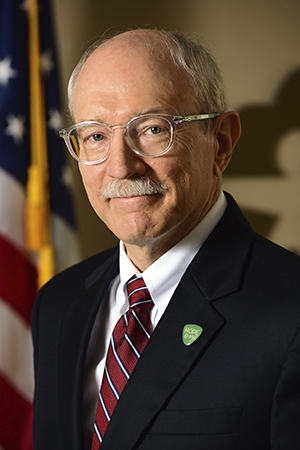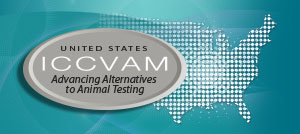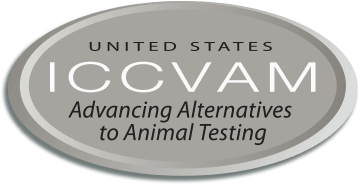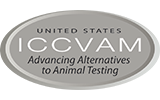Message from NIEHS and NTP
In the 2020-2021 Biennial Report, we are pleased to share with you the many accomplishments of the NTP Interagency Center for the Evaluation of Alternative Toxicological Methods (NICEATM), the Interagency Coordinating Committee on the Validation of Alternative Methods (ICCVAM), and the 17 ICCVAM agencies that address needs and priorities identified in the Strategic Roadmap for Establishing New Approaches to Evaluate the Safety of Chemicals and Medical Products in the United States.
The Strategic Roadmap has guided broad collaborative efforts to reduce and replace animal use for acute toxicity testing that show promise for having wide-ranging impact. An important milestone in these efforts was realized in 2021 with adoption by OECD of Guideline 497, which describes use of defined approaches to predict skin sensitization potential without using animals. Development of the new guideline was sponsored by ICCVAM member agencies and led by NICEATM in collaboration with scientists from Canada and the European Union. This guideline represents a new type of product for OECD and will enable the worldwide use of non-animal approaches for identifying potential skin sensitizers. Adoption of Guideline 497 has set the stage for broader acceptance of non-animal defined approaches for predicting eye irritation and other acute endpoints. The Collaborative Acute Toxicity Modeling Suite (CATMoS), which uses computational models to predict rat acute oral toxicity, was further developed during 2020 and 2021, and is being explored by ICCVAM agencies such as the U.S. Department of Defense and the U.S. Environmental Protection Agency as an approach for reducing animal use for specific testing applications. Model predictions, curated reference studies, non-animal assay data, and computational workflows are accessible through the Integrated Chemical Environment, which has been substantially updated over the last two years.
A key area of the Strategic Roadmap is communication and collaboration. Although the COVID-19 pandemic eliminated in-person meetings in 2020 and 2021, NICEATM and ICCVAM continued to effectively connect with stakeholders, as demonstrated by the high attendance and participation at ICCVAM-sponsored virtual public events such as the Communities of Practice webinars and the Public Forums. In addition, NICEATM and ICCVAM agencies such as the U.S. Environmental Protection Agency and the U.S. Food and Drug Administration sponsored virtual events to educate and engage stakeholders and progress the acceptance and use of alternatives to animal testing. Details and outcomes of many of these events are described herein.
While the COVID-19 pandemic presented significant challenges, it also provided opportunities for the application of human-relevant platforms to understanding disease mechanisms and assessing new therapeutics. As part of the pandemic response, NICEATM established the Microphysiological Systems for COVID Research (MPSCoRe) Working Group to coordinate the use of microphysiological systems in studies of COVID-19 and future emerging infectious diseases. The MPSCoRe group engages researchers, microphysiological systems model developers, therapeutic/vaccine manufacturers, and international regulators to facilitate advancement of promising models and their application to both investigations of disease biology and therapeutic development.
The importance and relevance of ICCVAM's work is reflected in its growth in recent years. Established in 2000 with 15 member agencies, ICCVAM grew to 17 member agencies in October 2020 with the addition of the U.S. Department of Veterans Affairs Office of Research and Development. This growth increases ICCVAM's effectiveness in coordinating efforts across the federal government to reduce, replace, or refine (3Rs) animal use in testing.
We invite you to read the Biennial Report to learn more about all that has been accomplished in the past two years to advance alternative methodologies and the 3Rs.
Rick Woychik, Ph.D.
Director, NIEHS and NTP
Brian Berridge, D.V.M., Ph.D., DACVP
Associate Director, NTP
Scientific Director, NTP Division, NIEHS

NIEHS Director Rick Woychik, Ph.D.

NTP Associate Director Brian Berridge, D.V.M., Ph.D.



